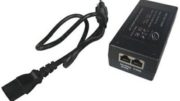An antenna’s an antenna’s an antenna. Hang around home theater fans for long enough and you’ll hear someone say something like that. And, to an extent it’s true. But it doesn’t mean that you can use them interchangeably. In order to understand why, you need to understand antennas, at least a little bit.
What broadcasting really is
Here’s something that will blow your mind. That is, unless you already know it. Broadcasting is wireless power. Yes, long before you could charge your phone wirelessly, you were getting wireless electricity through the air. You’ve been getting it your whole life.
In the late 19th and early 20th century, electricity seemed like magic. All you did was hook up a wire and you could make machines move by themselves. You could light up the darkness and warm up the coldest night. But the problem was always the wire. It cost a lot to wire a neighborhood for electricity, and it took time. What if you could skip that step?
The smartest minds of the day tried to create wireless transmission systems. The problem is, the laws of physics were against them. You can pump a lot of electricity through the air, but unless you’re very close to it, it won’t be strong enough to power your home. And, if you are strong enough to it, it will probably be fatal.
Wireless electricity finds its place
Wireless electricity may not be able to power your home but scientists in the early 20th century realized it could be used for a different task. It turns out if you put a signal into that wireless electrical broadcast, you can detect that signal when the electricity is received. This discovery is the basis for most of the cool things in our lives, from remote controls to smartphones to, of course, television.
Receiving that signal is, in fact, incredibly easy. Just stick a piece of metal up in the air and it will be received. But, the real question is, will it be received well?
Why antennas are different
The neat thing about broadcasting is that you can do it at different frequencies. The electromagnetic fields that surround us exist at different frequencies. We detect some as light and some as heat, but we as humans don’t detect most of it. Antennas, on the other hand, can “detect” that broadcast even when you can’t. I put “detect” in quotes because the antenna isn’t actively doing anything. It’s passively receiving the electricity and passing it down a wire, along with the signal that’s intermingled into it.
Each antenna is designed with a specific frequency range in mind, and while TV antennas work from about 50-800MHz, Wi-Fi antennas need to work in the 2.4GHz and 5 GHz bands. You need a completely different antenna for those. The design of an antenna dictates the kind of signal it can receive. That’s one reason why Wi-Fi antennas look different from
The good news is that Solid Signal has a lot of Wi-Fi antennas… there’s guaranteed to be one that works in your situation. We literally have over 1,000 to choose from, and if you get confused, just give the friendly experts at Solid Signal a call at 888-233-7563 and we’ll help find the right one for your situation.





